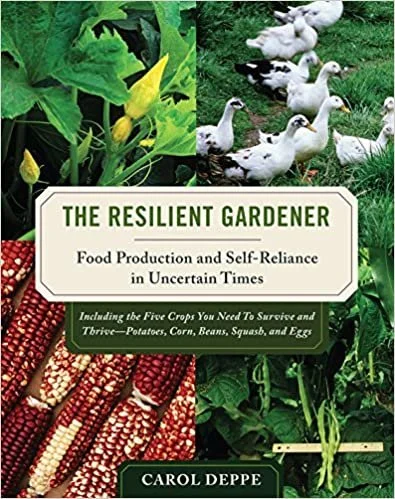Not since the self-sufficiency movement in the 1970s has an American published a book that so adequately explains what it takes to live off the land, even in the midst of climate change and natural disasters.
Author Carol Deppe, a biologist as well as an avid gardener, emphasizes taking control of your own food supply. Her book uses recent discoveries in science to point out ways of making home gardening more efficient and practical. It also suggests ways to prepare for the worst - natural disasters, financial collapse, climate changes, and more.
How much land do you need to garden for self-sufficiency?
"To grow everything you need, it would take a lot of land. But no one is truly self-sufficient in that way, and none of us need to be,” Deppe explains. "We are not all situated to garden in every year of our lives. Nor can we grow every kind of crop that can be grown in our region. But we can be developing a repertoire of information about what is grown in our area, who grows it, and how to store, preserve and use it.
"We can develop knowledge and patterns with respect to these crops that enhance our day-to-day quality if life, our personal resilience, and the resilience of our communities."
“After water, the most important characteristic of food is calories. It is lack of calories that will put you in the most trouble the fastest. After water and calories, protein is next in importance. As gardeners, we grow a variety of greens and vegetables. But to be resilient gardeners, we need to be skilled at growing more than just salads.”
Five Foods You Need to Survive and Thrive
Deppe devotes separate chapters to each of five foods she considers essential to self-reliance -- potatoes, corn, beans, squash, and eggs. She explains the values of each (potatoes are a great source of both carbohydrates and protein), how they are cultivated (you can grow corn with nothing but a shovel or hoe), how they are stored (beans are the ultimate survival crop because they are so long-storing) , how they are prepared (dried squash makes wonderful soups and stews and chips ), and why they are nutritionally important (eggs provide important long-chain omega-3 fatty acids that are unavailable from plant foods.)
“Perhaps the all-time masters at farming in an era of erratic weather in North America are the Hopi Indians of the American Southwest... Corn was their most important staple crop. Hopi culture called for storing enough corn for two years.”
33 Golden Rules of Gardening
1. All Gardening is Local
2. Plant Things That Grow Where You Live
3. Variety, Variety, Variety
4. Plant Varieties That Grow Where You Live
5. Buy High-Quality Seeds or Plants
6. Plants Need Sun7. Plants Need Warmth
8. Some Plants Need Cold
9. Plants Need Soil10. Plants Need Nutrients
11. You Must Prepare the Ground for Your Plants
12. You Can Plant in Beds or Rows; You Can Plant Intensively or Less So13. Plant at the Right Time
14. Plant Seeds at the Right Depth
15. Plants Need Water16. Plants Need Room to Grow
17. You Must Weed
18. Resist the Temptation to do Unnecessary Things
19. You Must Thin
20. Plants Need Protection from Insects, Pests, and Herbivores21. Plants Need Protection from Disease22. Plants Sometimes Need Protection from Weather
23. You Can Use Transplants or Seeds
24. Some Plants Need Support
25. Some Plants Need Pruning
26. Learn to Harvest and Store Produce Optimally
27. Experiment
28. Keep at Least Some Records
29. Think Small
30. Everything is Connected
31. Slow Down
32. Notice Everything
33. Save, Cherish, and Distribute Seeds of the Varieties You Care About the Most
These "Golden Rules" and their accompanying explanations are included in The Resilient Gardener.

